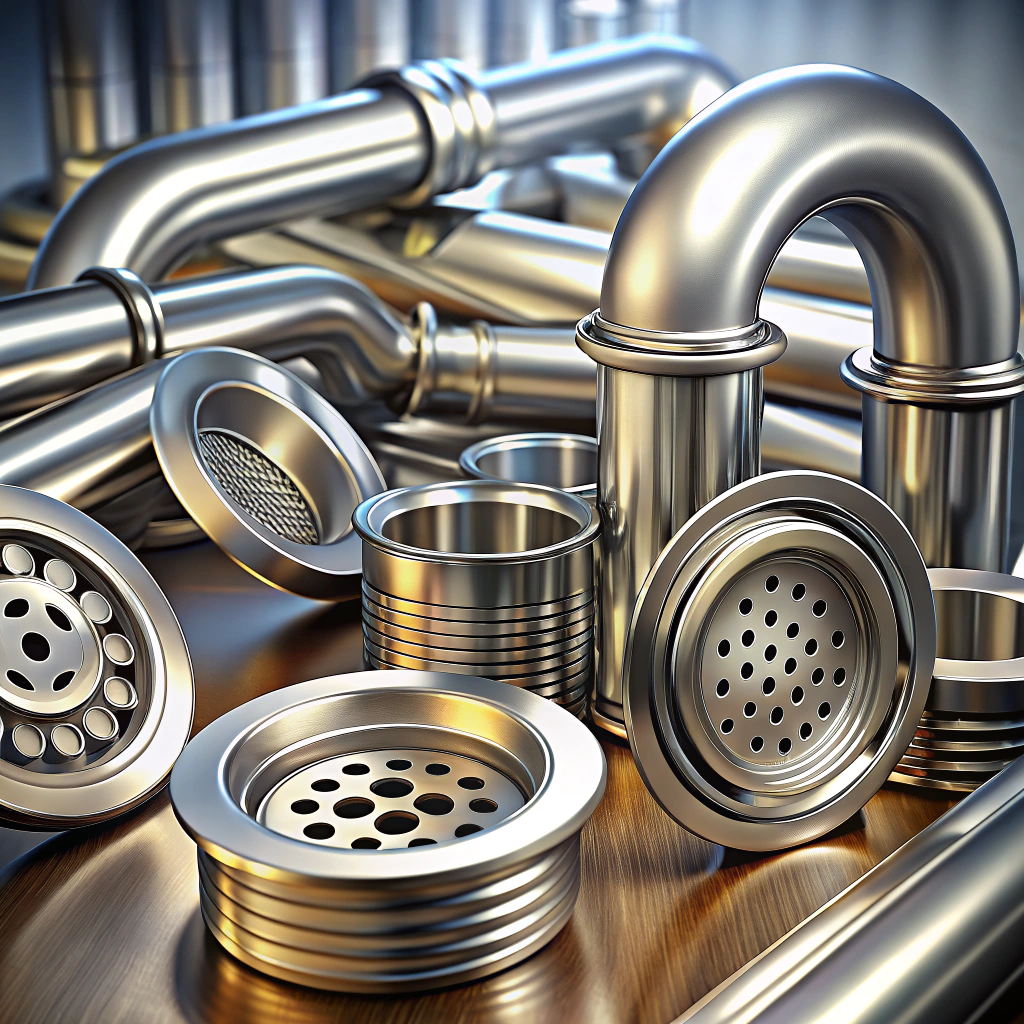Last updated on
In this step-by-step guide, you’ll learn efficient strategies to effectively unclog a double sink using common tools and products available at home.
Key takeaways:
- Plunging: Fill sink, seal second drain, pump plunger vigorously.
- Removing the Trap: Loosen and remove trap, clean out clog.
- Plumber’s Snake: Insert snake, maneuver and retract to break apart clog.
- Baking Soda and Vinegar: Pour mixture, let sit, flush with hot water.
- Consult a Professional Plumber: Experience, specialized tools, guaranteed work.
What's Inside
Plunging the Sink

To successfully plunge your double sink, follow these steps. First, fill one basin with enough water to cover the plunger’s head. Seal off the second sink’s drain using a wet cloth or a stopper—this ensures the pressure is directed where needed.
Vigorously pump the plunger up and down, maintaining a firm seal to generate the pressure needed to dislodge the clog. After several pumps, swiftly pull the plunger off the drain to create an additional pressure change. Often, you’ll have to repeat this process a few times.
If water begins draining, you’ve likely cleared the clog. If there’s no improvement, it’s time to escalate to the next step in the process.
Removing the Trap
Before starting this task, ensure you have a bucket handy to catch any water and debris. Put on a pair of gloves for hygiene and to protect your hands.
First, locate the trap—the U-shaped pipe beneath each sink basin. Typically, these can be unscrewed by hand, but if they’re tight, a pipe wrench can be used with caution not to damage the pipes.
Once loosened, remove the trap carefully and tip the contents into the bucket. It’s common to find the clog here, which you can then clean out. If the clog isn’t visible, probe inside the pipe in the wall with a wire hanger or a specialized brush to dislodge any obstruction that might be farther along.
After cleaning, reattach the trap securely, checking the washers or seals, ensuring they’re in good condition to prevent leaks. Run water through the sink to test the flow. If water runs smoothly, you have successfully removed the blockage. If the problem persists, it might be time to try other methods or consider calling a professional.
Use a Plumber’s Snake Properly
Equipped with your plumber’s snake, it’s time to tackle that stubborn clog. Begin by inserting the end of the snake into the drain until you feel resistance. This is likely your blockade.
Turn the handle clockwise to maneuver the coil into the clog, breaking it apart or hooking it to pull it out. Patience is key; too much force might damage your pipes.
Once the snake moves freely, slowly retract it, and prepare for a possible mess—clogs can be messy business. Flush the drain with hot water to clear any remaining debris.
Repeat the process for persistent clogs but avoid overzealous snaking as it could erode the pipes. If resistance persists, it might be time to concede the battle to the depths below and call a professional.
Employ Baking Soda and Vinegar
Harnessing the natural chemistry of household staples, baking soda and vinegar can be a dynamic duo in clearing minor clogs. Start by removing any standing water from your sink, then pour a half cup of baking soda directly into the drain. Next, introduce a half cup of white vinegar, and the resulting effervescence works to break down greasy residues and gunk.
Cover the drain with a plug or damp cloth to ensure the chemical reaction is contained within the pipes, enhancing the pressure and cleaning action. Allow this fizzy concoction to sit for about an hour; the longer it sits, the more thorough the cleaning. After the time has elapsed, flush the drain with boiling water. The hot water helps to dissolve and wash away the dislodged debris, leaving your sink ready for use.
This method, while gentle on your pipes, often works best for small or partial clogs. If the obstruction persists, it may require escalating to more robust tools or professional assistance.
Consult a Professional Plumber
When DIY efforts fail to resolve your double sink blockage, reaching out to a professional plumber is a wise move. Here’s why tapping into their expertise can be beneficial:
- Plumbers bring a wealth of experience that enables them to diagnose underlying issues that aren’t apparent to the untrained eye. Such problems, if left undetected, might lead to more costly repairs down the line.
- They have specialized tools that go beyond the average household arsenal. For instance, motorized augers and high-pressure water jets can tackle the most stubborn of clogs.
- A professional can guarantee their work, providing you with peace of mind. Should the problem persist, they’ll typically return to fix the issue at no extra charge.
- Safety is another key aspect. Incorrect use of chemicals or tools can damage your plumbing or pose health risks. Plumbers know how to avoid these pitfalls while getting the job done efficiently.
Remember, persistently clogged drains could signal more serious issues, such as structural problems or deep blockages in the main sewer line. A plumber will not just offer a temporary fix but also long-term solutions to prevent recurrent clogs.




